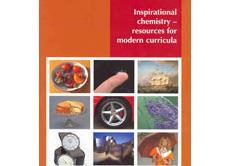An easy pill to swallow
Making medicines and drugs is a topic of interest to many students as virtually all will have taken some kind of medicine at some point in their lives. The pharmaceutical industry is also a major contributor to the UK economy and employs a large number of chemists.
Pharmaceutical companies carry out nearly a quarter of all industrial research and development in the UK. However, medicinal chemistry rarely features in pre-16 chemistry courses because the organic chemistry involved in a lot of the processes is too complex.
This activity looks at some cutting edge industrial chemistry – the development of combinatorial chemistry. It does not require students to have an understanding of organic chemistry beyond the simple addition reactions that feature in many pre-16 courses.
Students will be guided to:
- Notice differences between the structures of given molecules
- Predict the products of a reaction when given the reactants and products of a similar reaction
- Calculate the number of possible products of a combinatorial synthesis when given appropriate information.
While this activity can stand on its own, it is probably best used alongside the resource Making medicines.
This resource includes a five minute video clip which will be accessible to the majority of 14–16 year olds.
The question sheets provided are more suited to post-16s, but alternative questions are suggested here. The video clip will help students understand the written material provided here. It would fit well after the section on aspirin. If the question sheet is used, the film should be shown at least twice. Alternatively, students could be given individual access to the clip and allowed to pause it when required.
This activity could be introduced using the history of medicine timeline available on the Association of the British Pharmaceutical Industry’s website: http://www.abpischools.org.uk/resources04/history/index.asp (accessed November 2005).
It may be worth explaining to students the use of the terms ‘drug’ and ‘medicine.’ A drug is a substance that affects how the body works – either for better or for worse. A medicine improves health. A medicine contains beneficial drugs as the active ingredients (or a precursor which forms the active ingredient once inside the body) as well as other substances that make it easy or convenient to take.
Make sure students appreciate that chemists are required to design the synthetic methods and routes used in combinatorial chemistry. The involvement of a robot does not mean that chemists are not required. The syntheses must be designed to be general methods which can be used to make several members of a class of compounds.
Once a particular molecule has been selected for further work, an alternative synthesis may be developed that produces the specific compound of interest more efficiently. Once combinatorial synthesis is complete, mass spectrometry and NMR (nuclear magnetic resonance) spectroscopy are used to confirm the identity of the compounds that have been made, although this is often only attempted for the substances which have shown evidence of the required activity.
Put this in context
Find out about the role of a director of medicinal chemistry who is at the forefront of medicinal research.
Video questions
Video found at Making medicines.
- For every new drug which reaches the market, how many new chemicals does a pharmaceutical company make?
- What are the three main reasons why most compounds fail?
- How much compound is usually made using traditional methods?
- How much compound is required for testing for biological activity?
- What three types of chemical might be used as the starting point of a synthesis?
- What is used to break a new compound off the resin bead?
- A pilot plant is the last stage before full scale production. What quantity of product is made at a pilot plant?
- About how long does it usually take to develop a new drug, from the initial idea to the marketing of the product?
Video answers
- A pharmaceutical company makes around 10 000 new chemicals in the process of developing each new medicine.
- The three main reasons for failure are that the compound is not effective, produces side effects and/or is toxic.
- About 1 g of a compound is generally made by traditional methods.
- A few micrograms are required for biological activity testing.
- The types of chemical used as a starting point are: a. A chemical found in the body b. An existing drug c. A chemical that chemists think might react with an enzyme (they decide by looking at the structure of the compound).
- An acid (usually trifluoroethanoic acid) is used to detach new compounds from resin beads.
- Up to 100 kg can be made at a pilot plant.
- It takes around 10 years to develop a drug.
Downloads
Making new medicines
PDF, Size 0.71 mb
Additional information
This resource is a part of our Inspirational chemistry collection.
Inspirational chemistry book

A collection of resources, aligned with GCSE bodies, to support learners in England, Wales, and N Ireland.
- 1
- 2
- 3
- 4
- 5
- 6
- 7
- 8
- 9
- 10
- 11
- 12
- 13
- 14
- 15
- 16
 Currently
reading
Currently
reading
Making new medicines | combinatorial chemistry
- 18
- 19
- 20
- 21
- 22
- 23
- 24
- 25
- 26
- 27
- 28
- 29
- 30
- 31
- 32
- 33
- 34
- 35























































































No comments yet